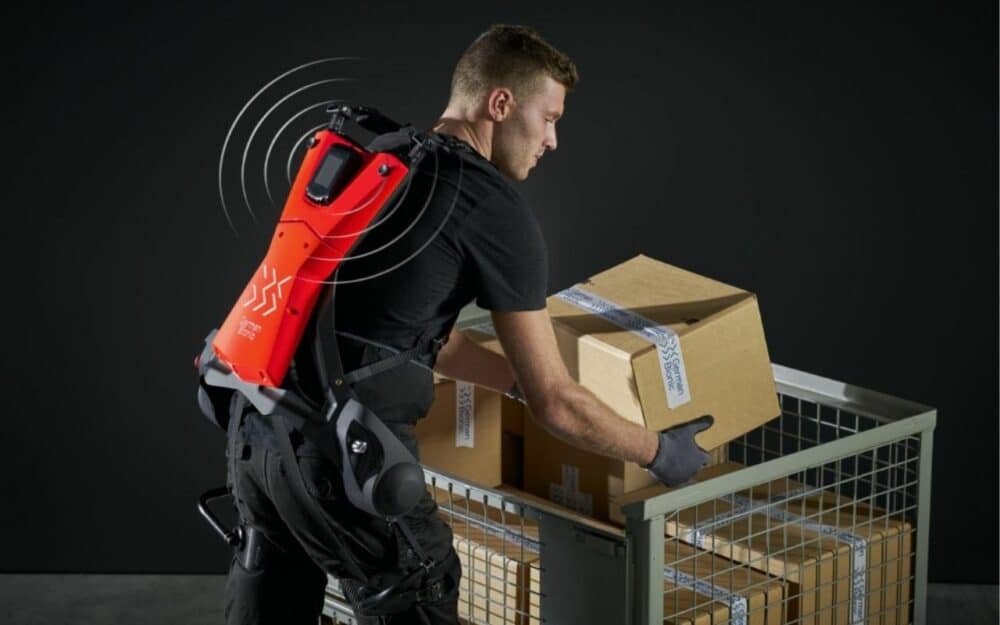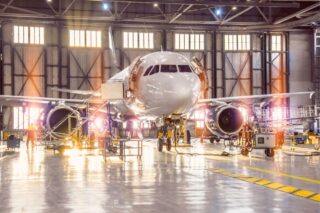Industrial exoskeletons are stepping off the silver screen and into the workplace. But unlike in the movies, most real-world exoskeletons focus on making workers safer rather than simply stronger. We have selected 6 exoskeletons currently used in the workplace.
Exoskeletons have starred in science fiction for decades, from Ripley’s forklift-style power loader in Alien to Tony Stark’s high-tech suit of armour in Iron Man. In reality, exoskeletons are less glamorous but are finding a much wider range of real-world applications, from warehouse safety and battlefield endurance to patient care and injury rehabilitation.
Assisting People, Reducing Injuries
Around 93,000 exoskeletons were used in workplaces across the globe in 2022, a figure which is expected to increase sevenfold by 2030, according to ABI Research.
In industry, full-body exoskeletons are uncommon due to their bulk, restrictiveness and expense. Instead, industrial exoskeletons tend to focus on specific areas of the upper or lower body to assist workers with specific types of tasks.
The goal is to keep workers safe by reducing injuries and fatigue, rather than giving them superhuman strength, says Duilio Amico, Head of Comau Wearable Robotics and CEO of wearable robotics specialist IUVO.
A purely strength-focused exoskeleton, such as granting workers the strength of a forklift, would offer very limited value compared to a safety-focused exoskeleton, Amico says.
“Wearable robotics is about assisting people, not turning them into machines. Tasks which simply require the brute strength of a forklift can be handed to a robot, whereas exoskeletons are perfect for assisting people in performing more varied, complex and intricate tasks which can’t be easily automated. Exoskeletons are also well-suited to assist people who work in uncomfortable positions for extended periods, such as overhead welding, which is important when such jobs are becoming harder to fill.”
Manual handling is the cause of more than a third of all workplace injuries, according to the UK’s Health and Safety Executive. Meanwhile, a comprehensive EU-wide study found that three in five workers experience musculoskeletal disorders, the most common of which is back pain.
Exoskeletons as PPE
Employers are beginning to take the risk more seriously, with Toyota becoming the first company to make exoskeletons mandatory Personal Protective Equipment for certain tasks in 2019.
The benefits for employees and employers extend beyond reduced injuries, sick days, compensation claims and high turnover due to burnout. Exoskeletons also reduce fatigue, which in turn reduces errors and allows workers to maintain productivity throughout a long shift, says Markus Woltmann, Senior Global Communications Manager of German Bionic.
“Assistance from exoskeletons can also open up difficult manual labour jobs to a much wider pool of applicants, beyond just people who are big and strong enough to do the job all day unassisted. This can be an important differentiator for businesses when the labour market is tight while improving worker productivity can also help offset increasing labour costs.”
Passive vs. Active Exoskeletons
German Bionic offers “active” exoskeletons which rely on motors and batteries. Meanwhile, Comau offers “passive” exoskeletons which rely on springs to store and return energy. For example, it can place tension on a spring when the wearer bends down, which then assists them when standing up and holding a heavy object.
Passive exoskeletons are typically smaller and lighter than active exoskeletons, making them less restrictive for the wearer. The lack of active components also makes them more affordable, with passive exoskeleton sales significantly outpacing active ones.
One benefit of active exoskeletons is that they can provide greater assistance to the wearer for more difficult tasks, Woltmann says.
“It all depends on what the wearer is doing and how often they’re taking advantage of the exoskeleton. If you’re lifting more than eight or ten kilos, several times each minute, then I think you need the extra power of an active system to avoid fatigue and potential injury.”
Whether industrial exoskeletons are active or passive, Amico says the key is to ensure that wearers feel like it is assisting them and not overriding them. This includes fine-tuning the fit and torque profile to ensure it remains aligned with the wearer’s movements and isn’t restrictive to use or tiring to wear.
There was a time when labourers prided themselves on their ability to undertake back-breaking work day after day, despite the damage it did to their bodies, but times are changing, Amico says:
“Today, a new generation of workers are more aware of their health and quality of life, so employers will struggle to fill these manual labour roles unless they take a more proactive approach to employee wellbeing. Workers who have trialled our exoskeletons have told us about the difference it makes to their quality of life – at the end of the day they can spend quality time with family and friends, rather than spending every evening on the couch recovering from the fatigue of the day.”
6 Exoskeletons Used in Industry
We have selected 6 exoskeletons currently used in the workplace
1/ Comau
Comau’s Muscular Aiding Tech Exoskeletons (MATE) range includes three passive upper body exoskeletons designed around springs which store and return energy. The exoskeletons assist workers with their arms, shoulders or lumbar region, depending on the tasks they perform.
2/ German Bionic
German Bionic’s Cray X and Apogee active upper body exoskeletons feature motors and a battery pack. The newer Apogee weighs around 7 kg. They are designed to help workers with constant heavy lifting in industrial environments such as warehouses.
German Bionic’s Apogee+ active exoskeleton is designed for the healthcare sector. It can be used to help caregivers lift and move patients.
3/ Exo-IQ
The S700 active shoulder exoskeleton, developed by exoIQ GmbH, aims to revolutionize industrial work by reducing physical strain. It’s the world’s first active exoskeleton designed specifically for industrial use.
Using electro-pneumatics, it provides support to arm, neck, and shoulder muscles, transferring additional power via compressed air. Equipped with sensors, it ensures precise movement detection and up to 5 kg of force support per arm. This innovative solution optimizes performance in tasks performed at chest/shoulder height or overhead.
4/ HeroWear
HeroWear’s Apex 2 passive exosuit features elastic bands on the back which stretch as the wearer’s muscles extend during movements. The elastic bands then recoil as the wearer’s muscles contract, returning energy and assisting with every bending motion. The bands comfortably move with the user, to reduce forces on the spinal muscles and discs each time the wearer bends forward or squats down.
5/ Verve Motion
Verve Motion’s active SafeLift exosuit features motors and a battery pack. It offers up to 240N of lift assistance force and offloads 40 per cent of the weight when lifting. Designed for industrial environments such as warehouses, the soft SafeLift exosuit weighs just under 3 kg.
6/ Skelex
The Skelex 360 passive upper body exoskeleton assists workers who use their arms intensively. The exoskeleton supports the movement of the shoulder joint and transfers weight to the lower body. It stores and releases energy intelligently to compensate for gravity, ensuring the comfort and long-term well-being of users.











